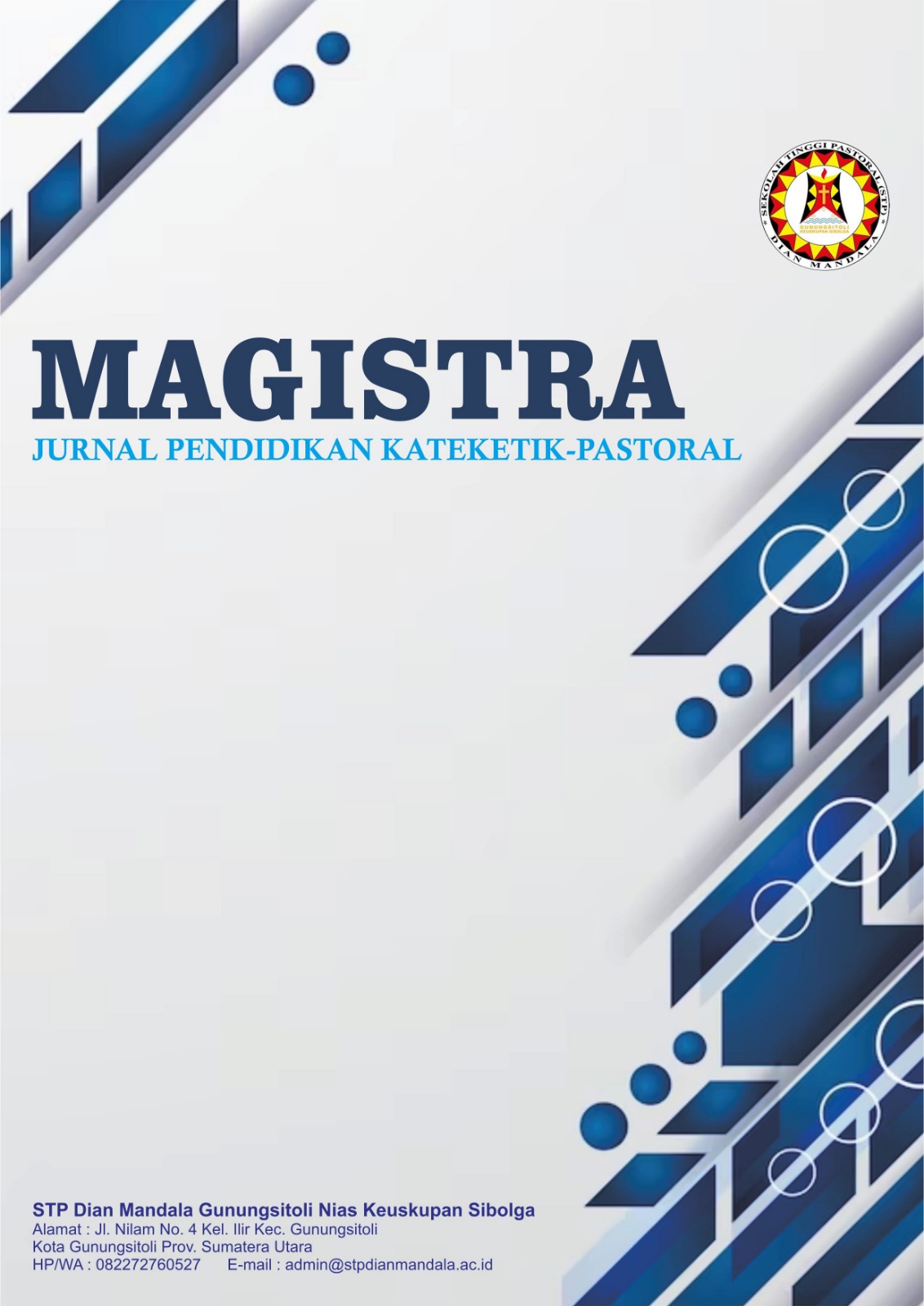Imaji Orang Besikama dalam Tradisi Hamis Batar
DOI:
https://doi.org/10.62200/magistra.v3i3.218Keywords:
Sacred Imagery, Emotional Actions, Spiritual Power, Hamis Tradition, Ritual PengorbananAbstract
This study aims to examine how the image of the Besikama people is formed and interpreted through the Hamis Batar tradition, a sacred sacrificial ritual. Using ethnographic methods, this study delves into the cultural practices and spiritual beliefs of the Besikama people, particularly in the context of their interactions with things considered sacred. This analysis utilizes the theoretical scalpel of “the look of the Sacred” introduced by Robert A. Orsi, a concept that goes beyond visual representation to understand a deeper relationship between humans and the divine, or “body beyond the image.” Initial findings indicate that Hamis Batar is not simply a series of ceremonies, but rather a space where the boundaries between the visible (body rituals, offerings) and the invisible (spiritual power, ancestral presence) are blurred. The Besikama people not only look at something sacred, but they also experience and shape it through actions, emotions, and physical sensations. Thus, the image formed is not a static representation, but a dynamic and living reality, continuously constructed and articulated through the practice of Hamis Batar. This research contributes to a richer understanding of how ritual can serve as a vehicle for experiencing and negotiating sacred meaning, going beyond mere symbolism.
References
Bere, Y. Y. (2023). Kajian tentang kepercayaan masyarakat suku Suhi terhadap upacara adat panen jagung (Hamis Batar) dalam hubungannya dengan rumah adat di Desa Lorotolus [Nusa Cendana University]. http://skripsi.undana.ac.id/index.php?p=show_detail&id=18786&keywords=hamis+batar
Bonavida, M. H. R., & Boro, V. I. A. (2025). Tradisi Hamis Batar No Hatama Manaik (Syukur atas Panen Jagung) di Desa Kamanasa Kecamatan Malaka Tengah Kabupaten Malaka (Proses Makna dan Pelembagaan). Jurnal Studi Multidisipliner, 9(6), 2118–7453.
Bria, A. (2021). Komunikasi ritual Hamis Batar (Studi fenomenologi ritual Hamis Batar pada masyarakat Desa Umatoos Kecamatan Malaka Barat).
Bria, A. (2022). Komunikasi ritual Hamis Batar (Studi fenomenologi ritual Hamis Batar pada masyarakat Desa Umatoos Kecamatan Malaka Barat) [Nusa Cendana University]. http://skripsi.undana.ac.id/index.php?p=show_detail&id=4171&keywords=hamis+batar
Counihan, C. (1999). The anthropology of food and body. Routledge.
Douglas, M. (1966). Purity and danger: An analysis of concepts of pollution and taboo. Routledge.
Eliade, M. (1957). Patterns in comparative religion. Sheed & Ward.
Eliade, M. (1959). The sacred and the profane: The nature of religion (W. R. Trask, Trans.). Harcourt, Inc.
Fox, J. J. (1980). The flow of life: Essays on eastern Indonesia. Harvard University Press.
Geertz, C. (1973). The interpretation of cultures. Basic Books.
Lévi-Strauss, C. (1963). Structural anthropology. Basic Books.
Nahak, H. M. I., Blajan Konradus, & Dasma Damanik. (2021). The rational choice of implementing Hamis Batar traditional rituals by the community of Rabasahain Village. Journal of Social, Humanity, and Education, 1(2), 91–102. https://doi.org/10.35912/jshe.v1i2.297
Orsi, R. A. (2012). Religious studies. Cambridge University Press.
Orsi, R. A. (2016). History and presence. Harvard University Press. https://doi.org/10.2307/j.ctvz0h9x5
Rapoport, A. (1969). House form and culture. Prentice-Hall.
Salu, G. R. (2023). Makna tuturan ritual Hamis Batar menyambut musim panen jagung masyarakat Tetun Desa Rabasahain Kecamatan Malaka Barat Kabupaten Malaka [Nusa Cendana University]. http://skripsi.undana.ac.id/index.php?p=show_detail&id=18109&keywords=hamis+batar
Seran, C. (2021). Tebe Bei Mau, tahapan tradisi Hamis Batar tiga tahunan di Wanibesak Desa Lorotolus Kecamatan Wewiku Kabupaten Malaka. Jurnal Deo Muri, 1(2).
Sudipa, I. N., Yadnya, I. B. P., Simpen, I. W., & Satyawati, M. S. (2017). Diaspora of Austronesian and non-Austronesian languages in Indonesia.
Taek, Y. A. (2023). Strategi mempertahankan tradisi Hamis Batar di Suku Uma Metan Ferik Katuas Lidak (Studi kasus pada masyarakat Desa Tukuneno, Kecamatan Tasifeto Barat, Kabupaten Belu) [Nusa Cendana University]. http://skripsi.undana.ac.id/index.php?p=show_detail&id=15084&keywords=hamis+batar
Tedjoworo, H. (2001). Imaji dan imajinasi: Suatu telaah filsafat postmodern. Kanisius.
Tedjoworo, H. (2017). Fenomenologi imaji dalam seni: Sebuah pergeseran peran subjek menuju saksi. Melintas, 33.
Turner, V. (1967). The forest of symbols: Aspects of Ndembu ritual. Cornell University Press.
Wawancara Beatrix Hoar, 20 Mei 2023 di Besikama-Malaka.
Wawancara Clara Luruk, 22 Mei 2023 di Besikama-Malaka.
Wawancara Stanislaus Seran, 15 Mei 2023 di Besikama-Malaka.
Downloads
Published
How to Cite
Issue
Section
License
Copyright (c) 2025 Jurnal Magistra

This work is licensed under a Creative Commons Attribution-ShareAlike 4.0 International License.











